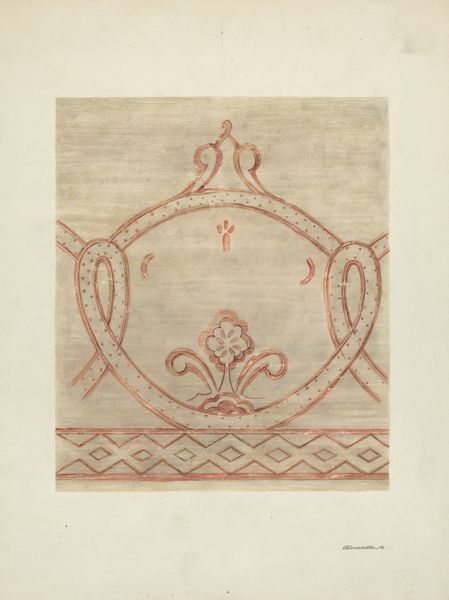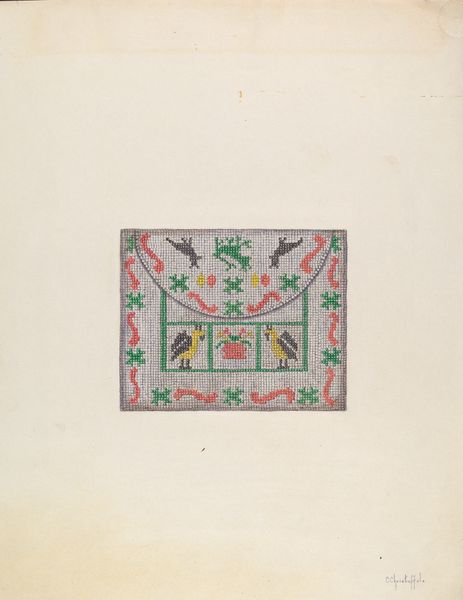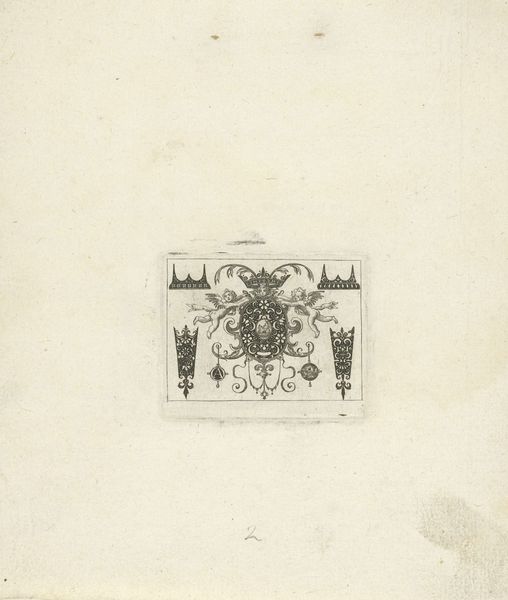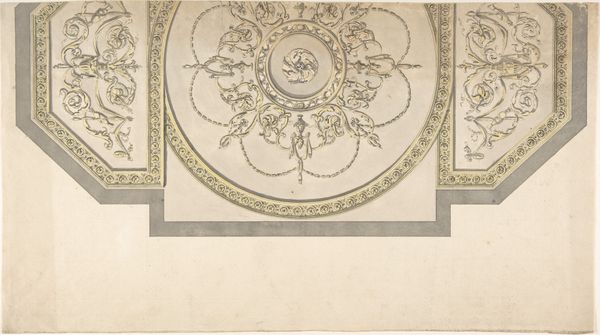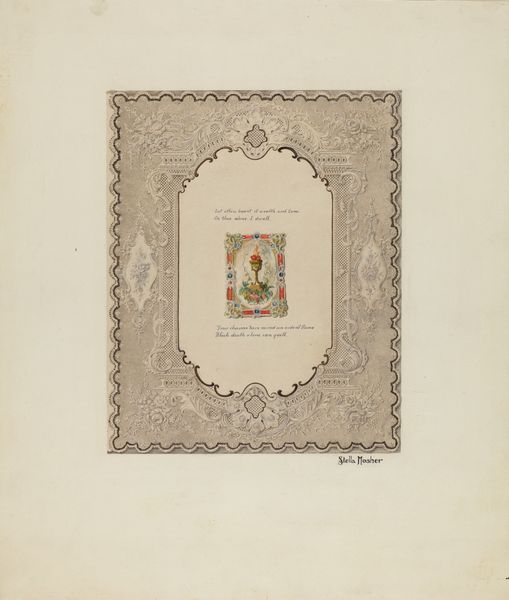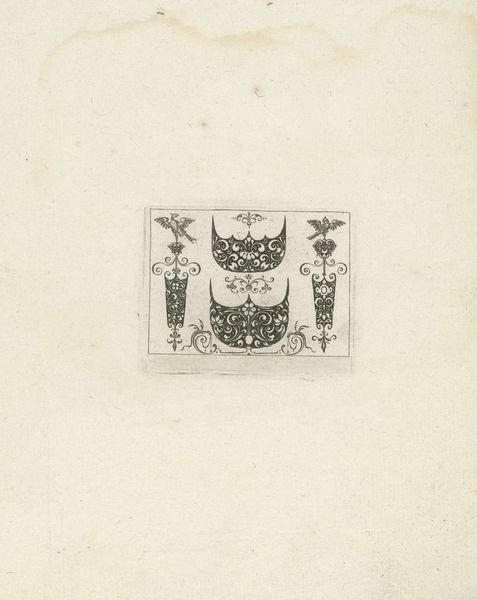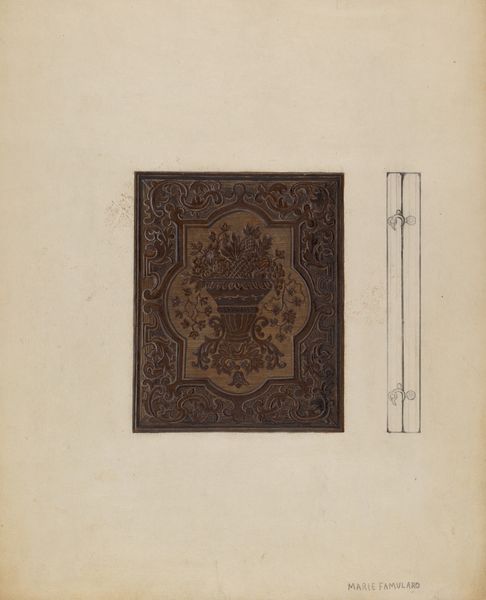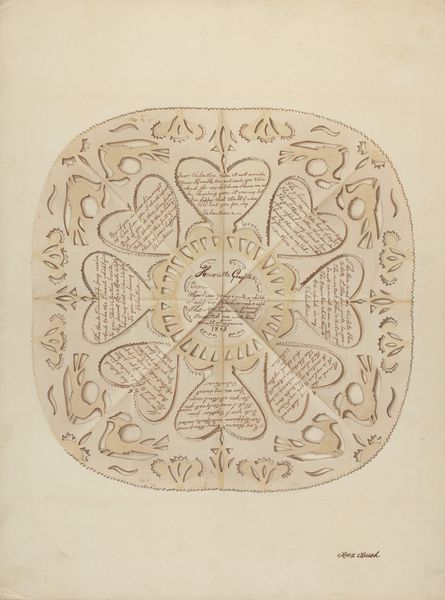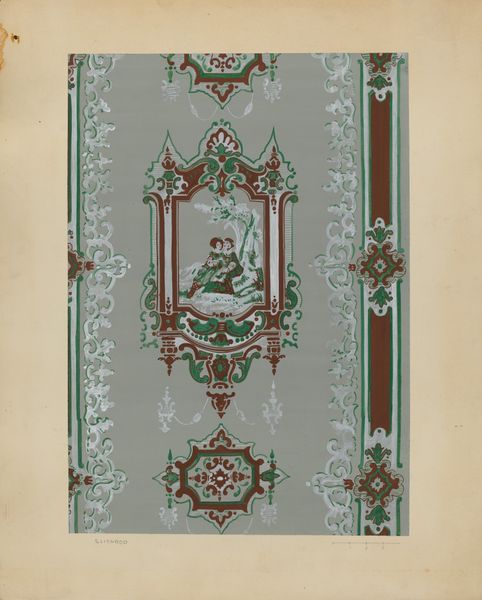
Design for a Chair Seat Cover with a Classical-Inspired Vase with Two Handles, Two Exotic Birds and Two Half-Human Grotesque Figures Inside an Ornamental Frame with Two Cornucopias Holding Bundles of Leaves and Fruits and Decorated Scrolls of Leaves and Flowers 1870 - 1900
0:00
0:00
drawing, coloured-pencil, print, watercolor
#
drawing
#
coloured-pencil
# print
#
11_renaissance
#
watercolor
#
coloured pencil
#
decorative-art
Dimensions: Sheet: 18 7/16 × 10 9/16 in. (46.8 × 26.8 cm)
Copyright: Public Domain
Curator: Here we have a fascinating design study, created sometime between 1870 and 1900 by an anonymous artist, titled "Design for a Chair Seat Cover with a Classical-Inspired Vase with Two Handles, Two Exotic Birds and Two Half-Human Grotesque Figures Inside an Ornamental Frame with Two Cornucopias Holding Bundles of Leaves and Fruits and Decorated Scrolls of Leaves and Flowers." Editor: Quite a mouthful! My first impression is how perfectly balanced and self-contained it feels. The color palette is surprisingly subdued, given the flamboyant detail. Curator: It is incredibly rich with detail. Consider its place within decorative arts and how objects like these reflect larger power dynamics. A piece like this would have adorned the seating of a particular class of people. How did those people participate in broader society? The grotesque figures especially suggest a cultural tension. Editor: Yes, the symmetry is compelling. The eye dances between the vase, the exotic birds perched jauntily on top, the playful, half-human figures…and those incredible cornucopias, spilling with fruit. There's a tension in the color, too, as it strives for balance. Curator: And we need to question the idea of “exotic” birds. Exotic for whom, and why? What does it mean that they're incorporated here, caged on top of this idealized classical vase? This object would've spoken to colonial aspirations, desires for worldly domination rendered in miniature, right down to what people sat upon. Editor: Interesting point. Technically speaking, observe how the artist uses watercolor and colored pencil to suggest texture and depth despite the flattening effect of the design. The delicate strokes highlight the curves of the vase, creating volume without sacrificing the ornamental flatness required for textile application. Curator: Absolutely. And by situating it in a contemporary lens, we might even examine what an opulent artifact such as this might evoke in contrast with present conversations surrounding sustainability and conspicuous consumption. Editor: It's funny, how something ostensibly so straightforward can, under the right interpretive light, suddenly bloom with so much…tension. Curator: Exactly. And that's why thinking critically about the confluence of influences on art—and, just as critically, on the observer of art—gives us such insight into our own cultural priorities. Editor: A well-placed question changes everything, doesn't it? It is, undeniably, beautifully balanced.
Comments
No comments
Be the first to comment and join the conversation on the ultimate creative platform.


